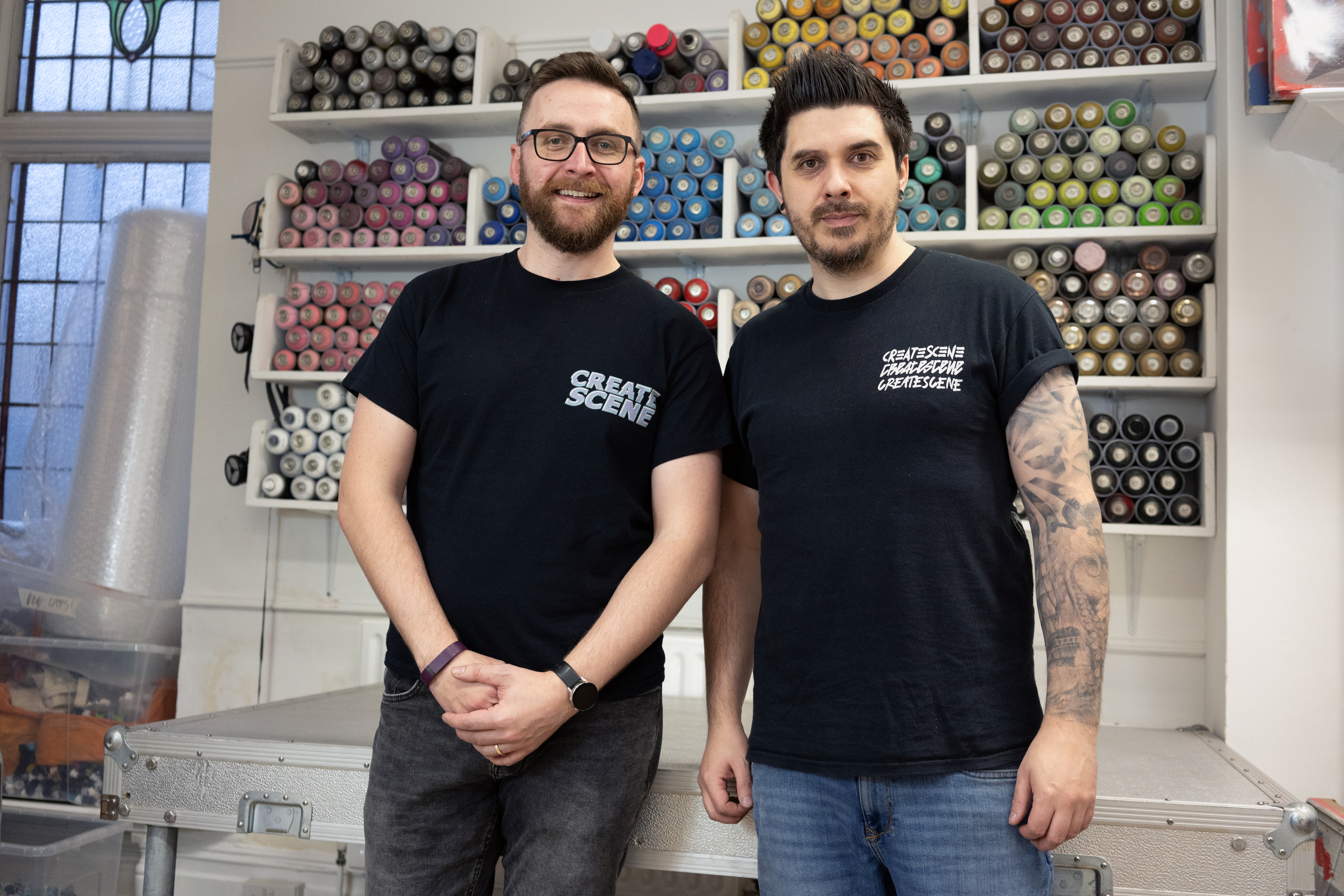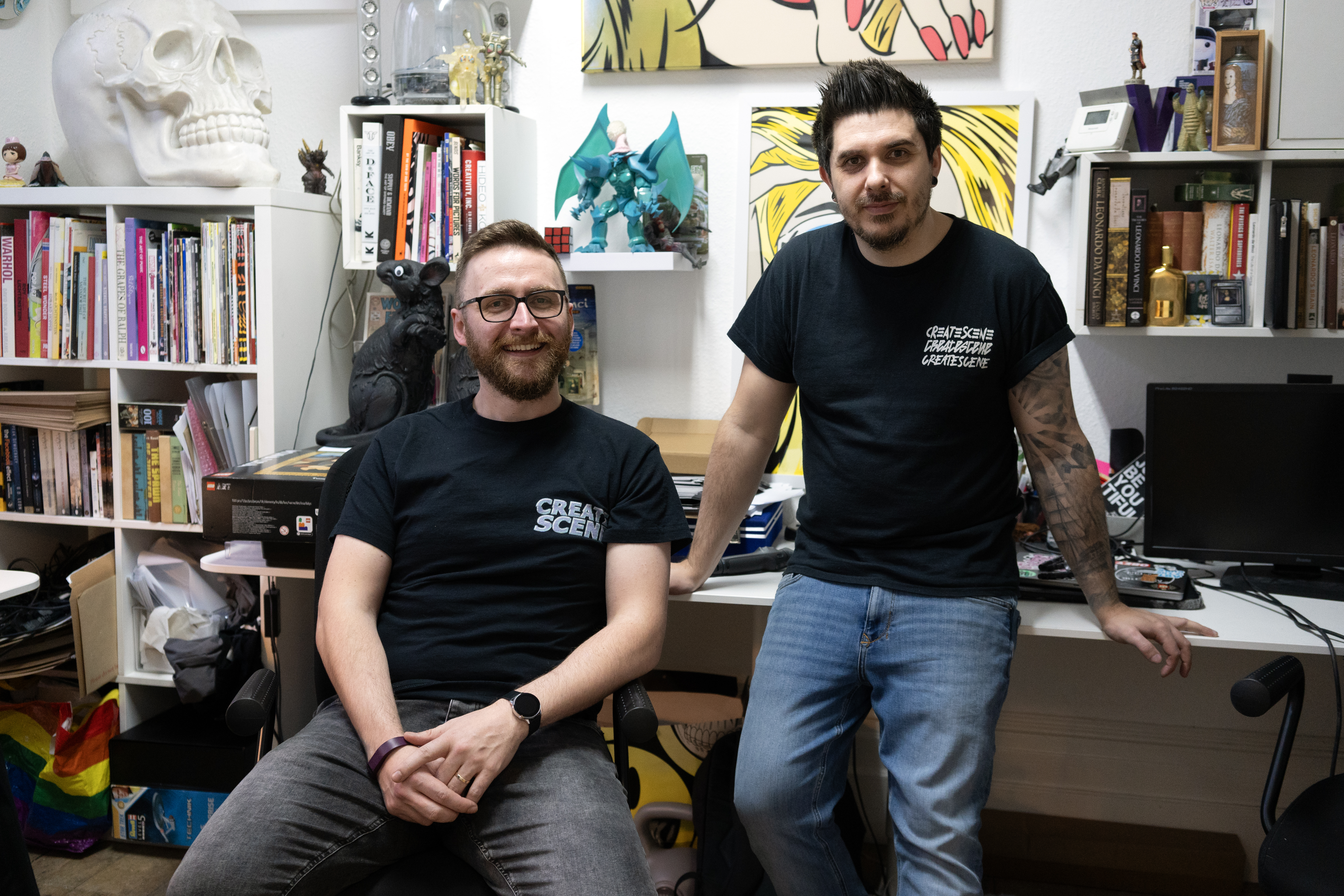Some revolutions begin in boardrooms. Some in garages. This one began in Bristol, in the heat and colour of a street art festival, with two outsiders who didn’t belong anywhere — except with each other.
It was 2012, and the air around Upfest was thick with paint fumes and possibility. Spray cans rattled, beats thumped from makeshift speakers, and the walls of the city transformed into temporary cathedrals of rebellion. In the middle of it stood Rich Simmons, 26, newly crowned the UK’s 'Most Inspirational Young Volunteer' for his work on a nonprofit he founded called Art Is The Cure. Dark, spiky haired, tattooed, and already breaking rules, he painted like someone who was better at speaking with his hands.
Across the crowd, another anomaly — Frazer Miller, just 21, soft-spoken but sharp-eyed, a coder who had done something almost mythic for his age — he’d built his own fully fledged social networking platform from scratch. While most of his peers were still fumbling through university coursework, Miller had architected his own miniature Facebook, clean, functional, quietly brilliant. He wasn’t interested in chasing hype. He wanted to see if code could carry weight.
On paper, they had nothing in common. One worshipped Leonardo da Vinci but lived like a punk, blasting out stencilled superheroes and comic-book icons with a rebel’s sneer. The other worshipped clean syntax and elegant databases, preferring to build invisible architectures that held entire communities together. But when they met, there was an instant recognition. They spoke in different mediums — paint and code — but the language was the same. Build things that matter.
Two Outsiders, One Vision
That afternoon, they sat on the riverbank and talked. About art. About technology. About people who felt invisible in a world that didn’t know what to do with them. Simmons had seen first-hand how creativity could transform lives — his Art Is The Cure project had reached thousands, a lifeline for people struggling with mental health. Miller had built the bones of a digital network, something structurally sound but missing a beating heart.
Together, they imagined a hybrid — a platform that wasn’t just another feed to scroll. A community where people could share art, connect, support one another. Creativity not as decoration, but as medicine. Technology not as distraction, but as connection.
It was bold, naïve, beautiful. And it almost worked.
For a year, they built. For a year, the dream looked alive. And then — as it so often does — life intervened. Health challenges, career pivots, the weight of reality. The project was shelved. Simmons dove headlong into art. Miller disappeared into the machinery of the tech industry.
Diverging Paths
Simmons’ career became the kind of story the art world both loves and resents. Entirely self-taught, self-managed, and stubbornly independent, he refused to play by the rules. His work exploded across galleries in London, New York, LA. He created a genre he dubbed Pop Punk Art — equal parts colour riot, cultural commentary, and confrontation. His paintings looked like graphic novels left out in the rain: stylized, slick, but bleeding with meaning. Beneath the stencils lay hidden messages, codes, and critiques. He wasn’t painting to decorate — he was painting to provoke.
Miller’s path was quieter, but no less radical. He became a builder in the truest sense, moving through the startup trenches and eventually helping scale Zoopla into a property-tech juggernaut worth over £2 billion. He spoke less, but built more. He dove into new programming languages, experiments, cybersecurity rabbit holes. Where Simmons wielded spray paint, Miller wielded code — each line a brushstroke, each platform a canvas.
He didn’t see programming as sterile logic. To him, it was craft. Architecture. The construction of invisible cities where people could live, move, and belong. He wasn’t trying to automate humanity out of the equation. He was trying to put humanity back into the machine.
When the World Stopped
Fast forward to 2020. The pandemic hit like a sledgehammer. Cities went silent. Galleries closed. Studios shuttered. For millions of creatives, opportunities evaporated overnight. No gigs. No commissions. No tours.
For Simmons and Miller, it was déjà vu. A decade earlier they had dreamed of a platform built exactly for this moment — a place where creatives could connect, support each other, and collaborate. The idea had been shelved, but never buried. And now the world was screaming for it.
So they picked it back up.
From homes three hours apart, they started to build. Zoom calls. Notepads filled with sketches. Code repositories growing line by line. Simmons brought vision, aesthetic, design — the instinct of someone who knew how creatives thought and what they needed. Miller brought structure, logic, and the battle-tested experience of scaling billion-pound platforms.
It was, once again, the duet of spray paint and syntax. The artist who thought like an engineer. The engineer who coded like an artist.
And slowly, CreateScene came alive.
A Sleeping Giant
At first, it was a skeleton. A bare-bones network where creatives could make profiles, share projects, and connect. But the potential was electric. This wasn’t Instagram, where algorithms bury you unless you pay to be seen. It wasn’t LinkedIn, where creativity feels like a corporate afterthought. It wasn’t Twitter, where chaos reigns. CreateScene wanted to be something else entirely: a home for the creative scenes of the world.
By 2025, the platform was live and steadily growing. Hundreds of musicians, filmmakers, painters, writers, designers, and coders had joined. The numbers were modest, but the energy was unmistakable. This wasn’t just another app. It was a spark.
To some, it looked like the second coming of MySpace — the platform that had once launched bands, artists, and entire cultural movements before being devoured by Facebook. But CreateScene felt different. It wasn’t nostalgia. It was evolution.
Jobs and Wozniak, Punk and Code
People love comparisons, and Simmons and Miller have heard them all. Jobs and Wozniak. Punk and Poet. Chaos and Order. And sure, maybe there’s truth in the Jobs/Wozniak parallel — one the visionary provocateur, the other the technical genius who makes it all possible. But their bond is less about business archetypes and more about survival.
They’ve carried each other through health scares, career pivots, wins and losses. They’ve known what it means to shelve a dream and what it feels like to unearth it again. Their friendship is the foundation. The platform is the expression.
And perhaps that’s what makes CreateScene different. It wasn’t cooked up in a venture capitalist’s office. It wasn’t born out of market research. It was born out of two best friends trying to make sense of the world — and trying to make it better.
Pop Art with a Pulse, Code with a Soul
Spend time with Simmons, and you feel the voltage. He talks in fast riffs, equal parts comic book lore, punk ethos, and da Vinci obsession. He wants to drag art out of its ivory tower and into the streets, into real life where people can’t ignore it.
Spend time with Miller, and the current shifts. He’s calmer, but no less intense. He talks about code like a craftsman talks about wood. He believes platforms can be more than distraction machines — they can be bridges. “Tech should bring people closer,” he says simply. It’s not just a line. It’s the throughline of his life’s work.
Put them together, and you get CreateScene — part punk zine, part engineering marvel. A place where rebellion and rigor shake hands.
The Future Scene
Today, CreateScene is still a sleeper. A young platform with the kind of scrappy energy you could mistake for fragility — until you remember how many world-changing ideas started exactly like this. MySpace. Facebook. SoundCloud. YouTube. They all began as sketches, side projects, underestimated experiments.
And yet, there’s something different in CreateScene’s DNA. It doesn’t want to replace existing platforms. It wants to unite. It wants to be the stage where scenes collide: where a bedroom producer in Brighton finds a filmmaker in Berlin, where a comic artist in São Paulo links with a coder in Seoul.
It’s not about scrolling. It’s about sparking.
Ask Simmons and Miller what CreateScene really is, and they’ll tell you it’s not an app. It’s not a platform. It’s a stage. One that belongs to everyone.
And like the best stages, it’s not about the lights. It’s about the people who step onto it, ready to be seen.


